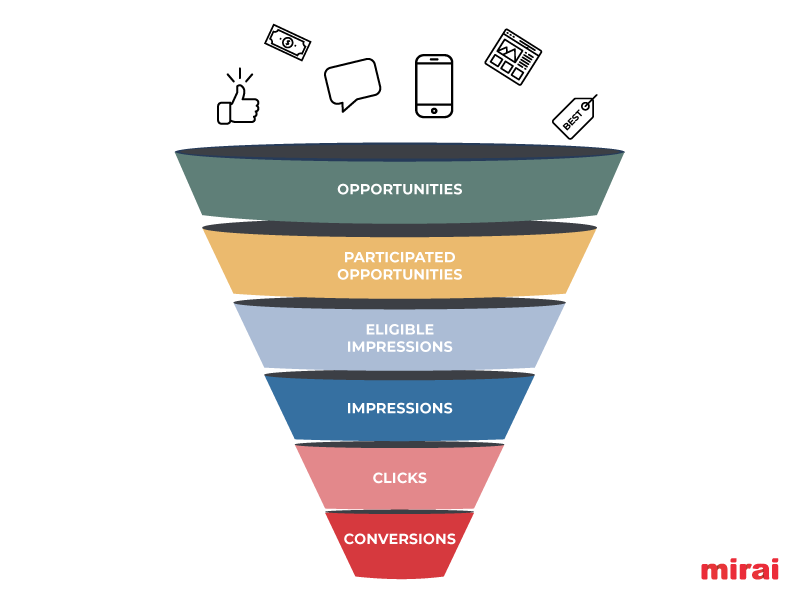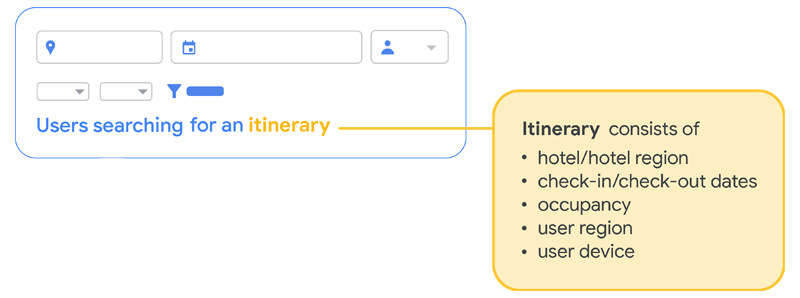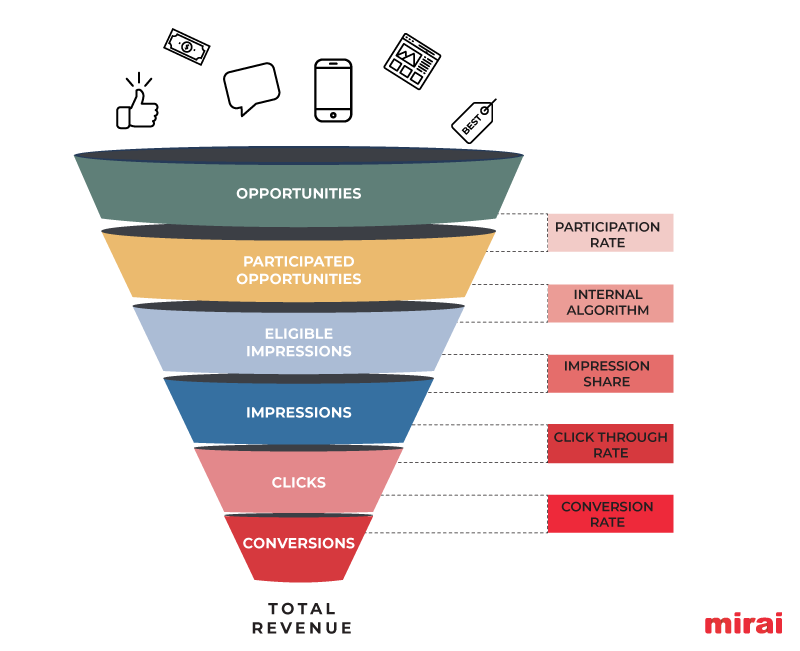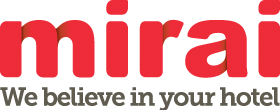En español, en français, em português.
“Optimising presence in metasearch engines” is the desire of all hotels, which in layman’s language translates into a twofold desire: to increase sales generated from metasearch targets and increase profitability by reducing costs… in other words, to make the channel more efficient.
In order to tackle this “meta search engine optimisation” you need:
- Knowledge of the metasearch funnel. For many, the metasearch funnel is a black box that prevents them from identifying and implementing opportunities for improvement.
- Transparent access to data. The information available to hotels is often poor, and few hoteliers have a good understanding of their own campaign numbers beyond basic data, such as number of clicks, conversion rate, bookings or production generated.
In this, the first of a series of posts about metasearch engines, we take an in-depth look at the “metasearch funnel” from the highest, least-understood level, where your potential customers are, to the lowest level, where the bookings you receive take place. In each stage of the funnel we will identify the main KPIs you should be aware of in terms of assessing whether your numbers are adequate or, on the contrary, you have room for improvement. In the case of the latter, we will also identify ways of realising this improvement
The Google Hotels funnel
This consists of six levels: opportunities, participated opportunities, eligible impressions, impressions, clicks and bookings/conversions.
- Opportunities
This is the most important variable and, curiously, the most unfamiliar and inaccessible. Opportunities represent the demand for your hotel. It is the total number of times your hotel could have been shown to a user, and represents the sum of users who search for you by name (branded search) plus those generic searches (usually by location) in which your property is eligible to appear in the results.
Google Hotels searches are called user itineraries and include five elements:
- A specific hotel or location.
- Dates of stay (check-in and check-out).
- A specific occupancy.
- The user’s device.
- The user’s country.
Additionally, the user can apply filters such as the cancellation policy (only flexible or any).

An example of an itinerary is “a user from the USA, with a mobile phone consulting the W hotel in Madrid, from the 17th to the 19th of April for 2 people”.
We arrive at the first relevant funnel variable, the Participation Rate, which indicates “out of every 100 opportunities (demand), in how many does my hotel have results to offer, due to the fact that I meet the user’s search requirements (itinerary), meaning I can participate in the auction”.
It would appear contradictory that such an important variable is so unknown in many hotels, the fact being that very few integration partners inform their customers, making it difficult for them to optimize their results.
Google also provides you with information on missed opportunities (Missed Participation) as well as the corresponding reasons (unavailability, suspended hotel, cache problems, etc.). A low Participation Rate is a yellow flag and should constitute your primary area for action.
- Participated Opportunities
Overcoming this first participation rate filter brings you to participated opportunities, or “opportunities (demand) that you can enter in order to compete in the auction”. This is calculated using a simple multiplication.
(Participated opportunities) = (Opportunities) x (Participation rate)
- Eligible Impressions
From the total number of available opportunities to enter the auction, Google applies a complex algorithm in which it takes into account factors such as price accuracy or itinerary coverage to arrive at Eligible Impressions, which is little more than “the number of times your ad has participated in an auction”.
Only advertisers (direct channel, OTAs etc.) possessing campaigns with eligible impressions will compete in the auction. Advertisers who win the auction are shown to the user by converting an eligible impression into an impression.
The Impression Share is the percentage of times users have seen your prices out of all the times you have participated. A value of 83% would indicate that you have displayed your prices 83 times out of every 100 times you participated in the auction.
- Impressions
From the Impression Share we move on to the more well-known levels of the conversion funnel. In this fourth level we find Impressions, or “the number of times users have seen your prices”. The more impressions, the more sales opportunities.
How many impressions end in a click? This will give us the Click Through Rate (or CTR), which is the percentage of clicks your ad receives out of every 100 available. A CTR of 4% indicates that you received 4 clicks out of every 100 impressions or impacts made to the user. The CTR measures the effectiveness of your metasearch ads.
- Clicks
The fifth level of the metasearch funnel, clicks tells you “how many metasearch visits you have received from users querying a specific itinerary”. Clicks represent traffic to your website and you should be able to validate this in Google Analytics.
This traffic to your website generates sales in the form of bookings. How many? This we know from the Conversion Rate, which is the number of bookings generated from every 100 clicks received. For example, 2 bookings out of 100 clicks will give you a conversion rate of 2%. Simplifying, because it is a very complex subject, the conversion rate measures the effectiveness of your direct channel strategy as well as the efficiency of your booking engine.
- Bookings and revenue
We have now reached the sixth and final level of the funnel, where we find bookings and the revenue these generate. This revenue, cross-referenced with the investment, will give us our campaign profitability. The industry uses three different variables to measure profitability: ROAS, ROI and equivalent commission, all of which measure the same thing, but with nuances.
- ROAS or Return on Ad spend: Revenue / Investment. Tells you how many euros you earn for every €1 invested.
- ROI or Return on investment: (Income – Investment) / Investment. Tells you how many euros you earn (after costs) for every €1 invested.
- Equivalent commission: Investment / Income. Tells you how much you are investing for every €100 deposited.
The Google Hotels funnel and its variables
If we combine the different levels with the variables that connect them, we arrive at the desired overall picture we were looking for, and which will assist us in our goal of optimising our campaigns from now on.
Conclusion
If you’re a hotelier who wants to “optimize your metasearch presence”, start by getting to know the six levels of the funnel as well as all the numbers (not just some of them) of your campaigns. Don’t be content with just knowing the numbers from the Impressions level down. The top of the funnel is full of areas for improvement. Ask your integration partner for a full report with KPIs at every level of the funnel and ideally segmented by different variables, such as sending market and device. Remember that information is power, and having a complete x-ray of your campaigns will automatically lead you to your areas of improvement.
In the next instalment we will focus on listing and understanding the variables that cause you to lose opportunities at each level of the funnel.
About Mirai Metasearch
Mirai Metasearch connects your hotel to metasearch engines, making it more profitable than sales generated through OTAs. For more information, contact us at metasales@mirai.com
About Mirai Partnerships
If your company would like to benefit from our solutions, please contact us at partnerships@mirai.com
About Mirai Consulting
Our advice and support service for hotels that want to take their distribution and direct sales to the next level. More information at consulting@mirai.com



